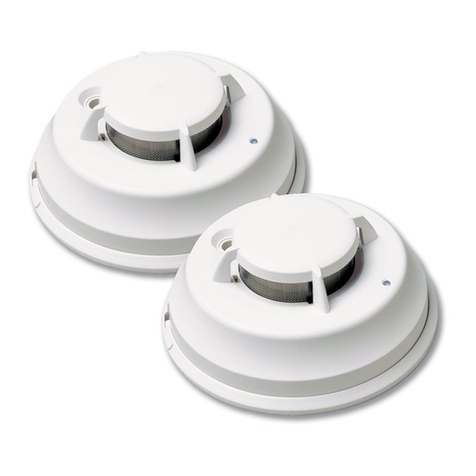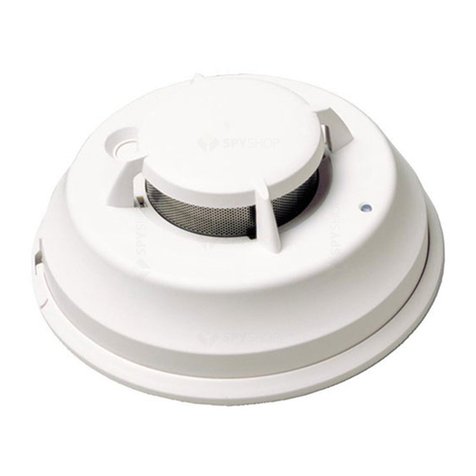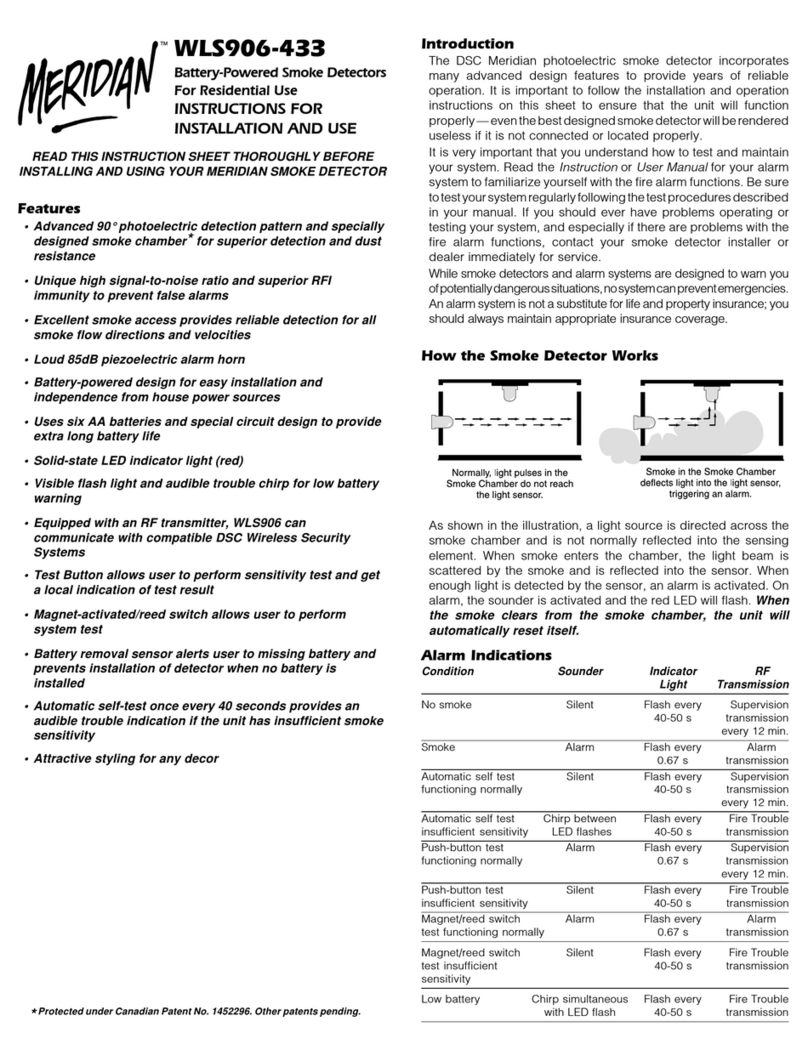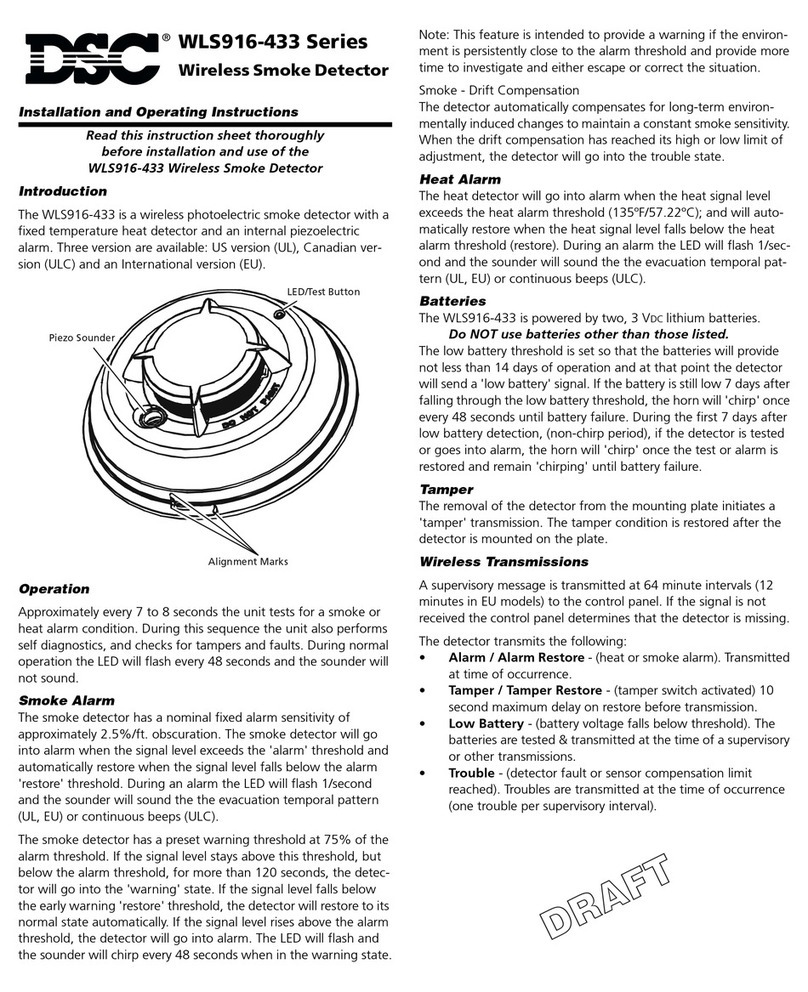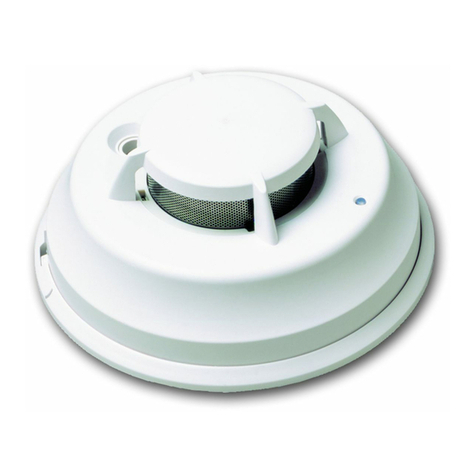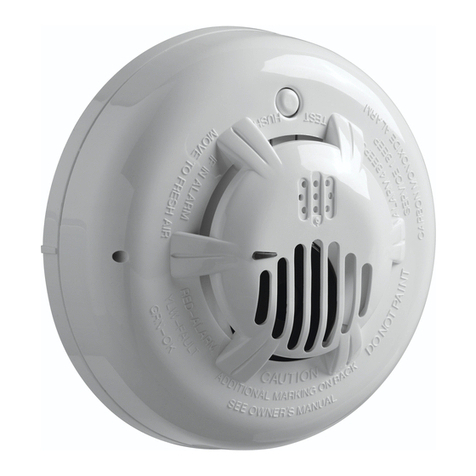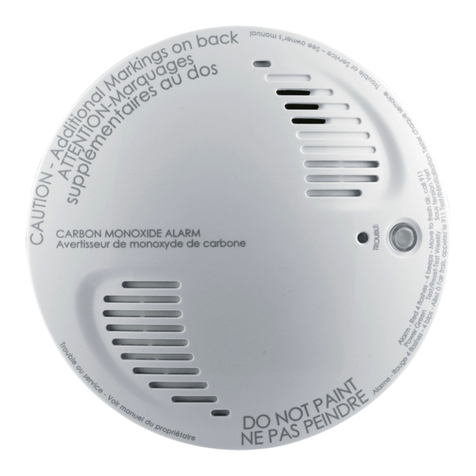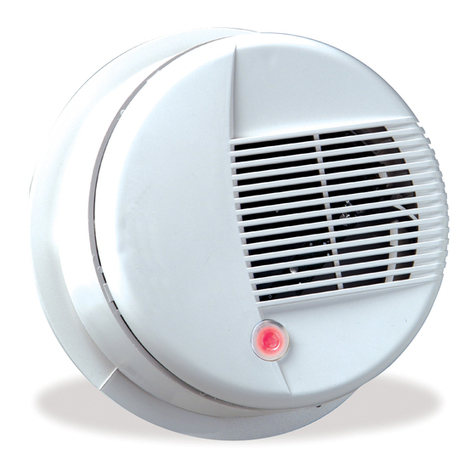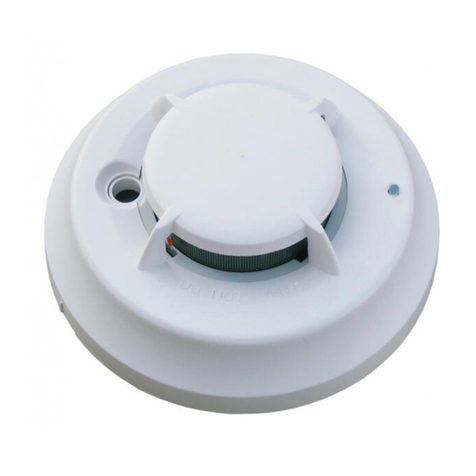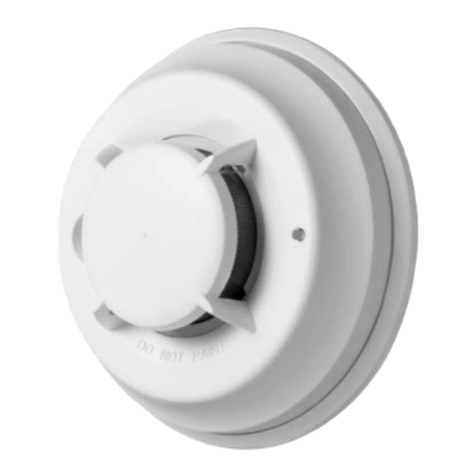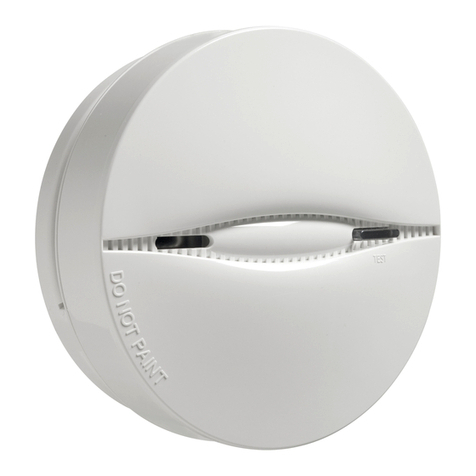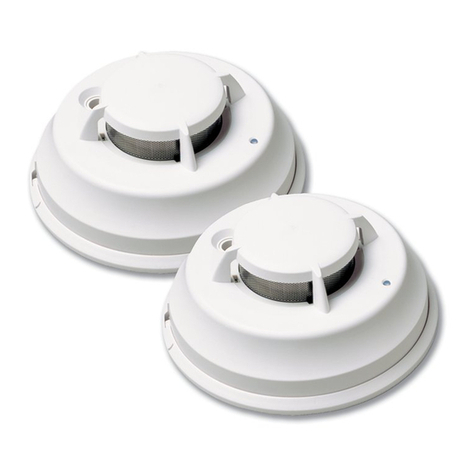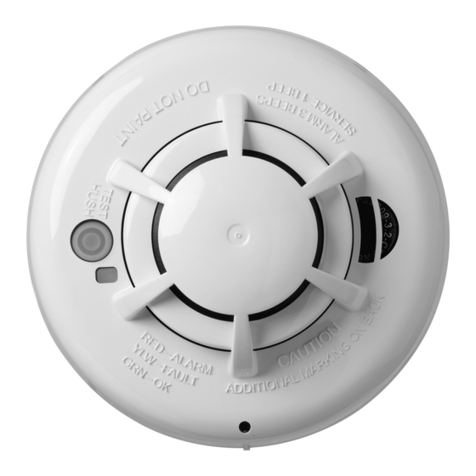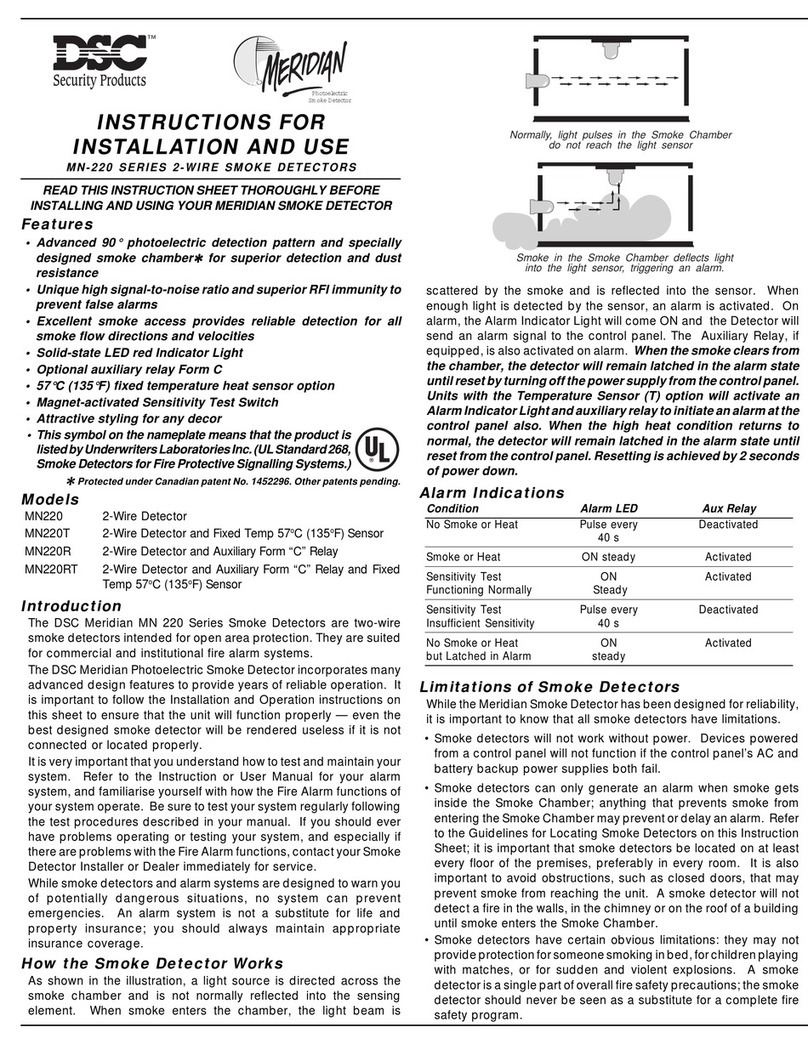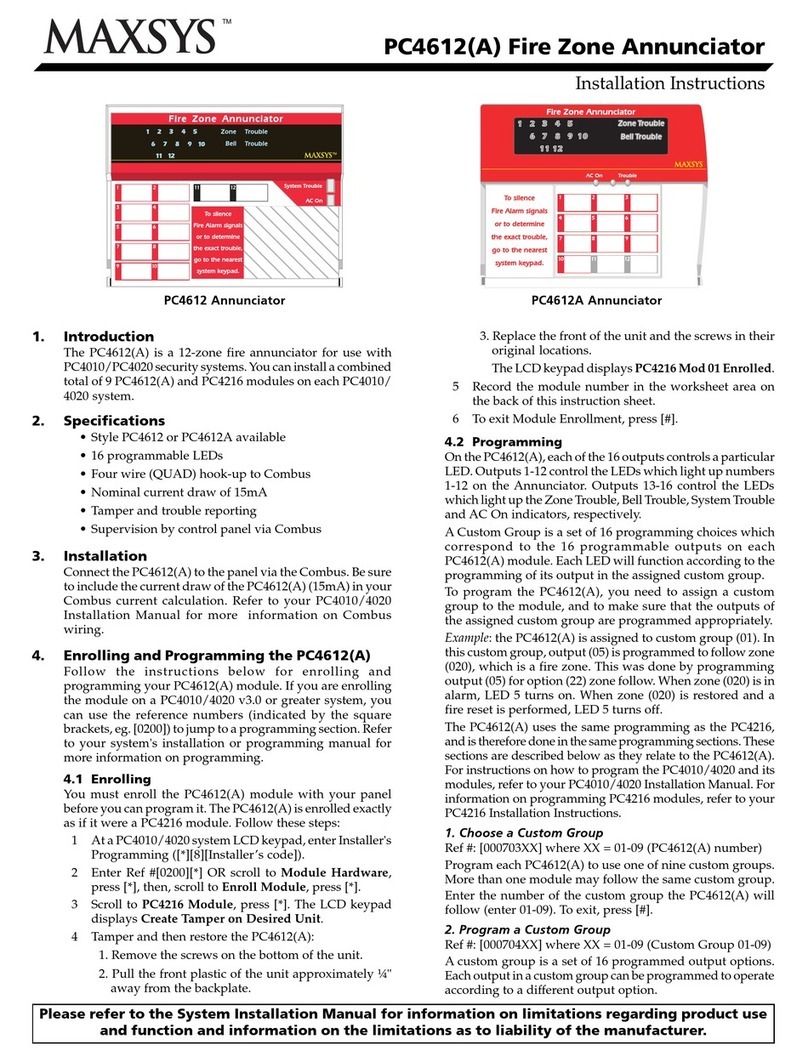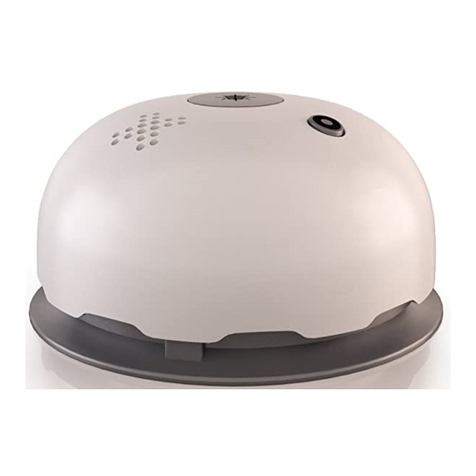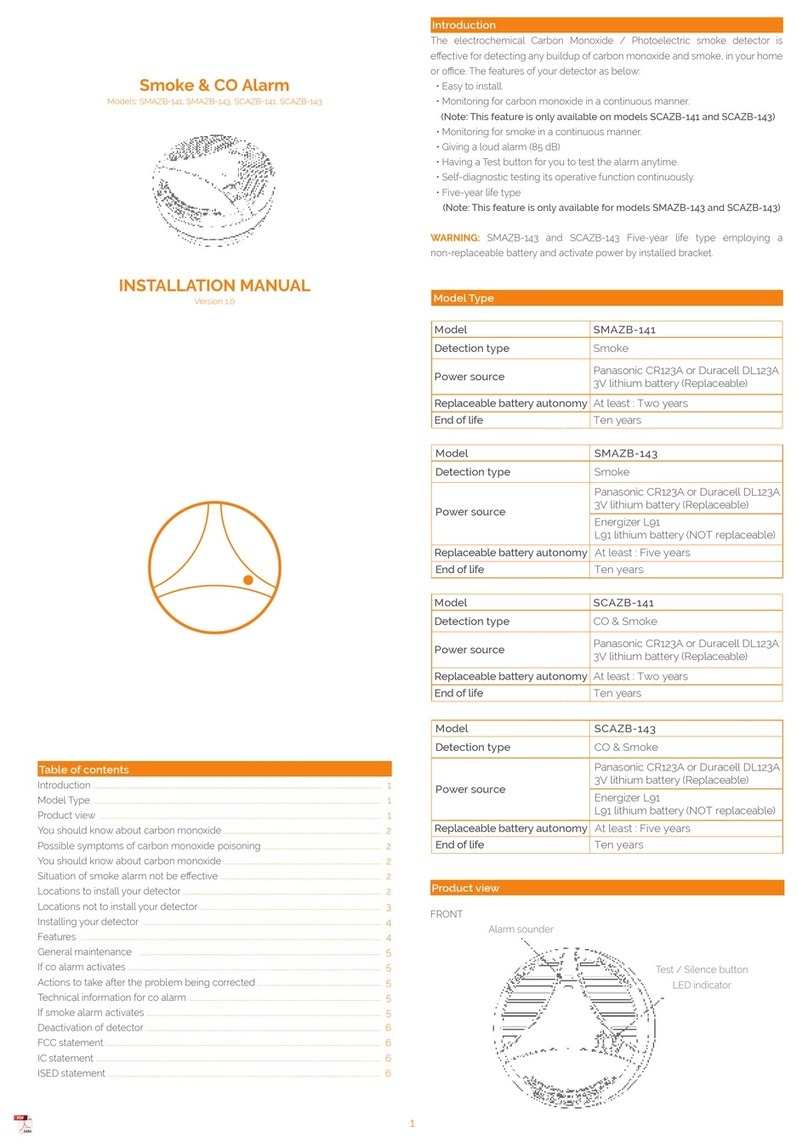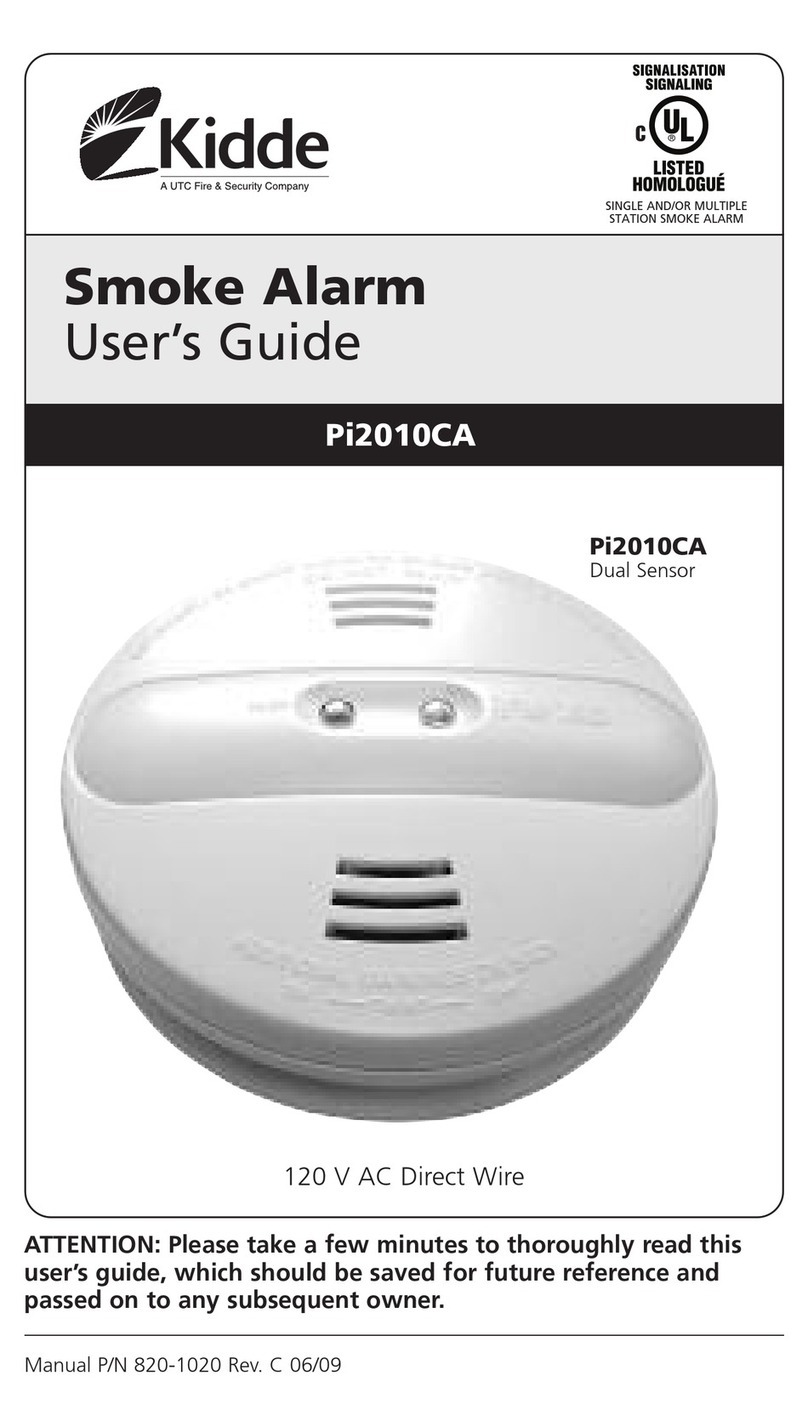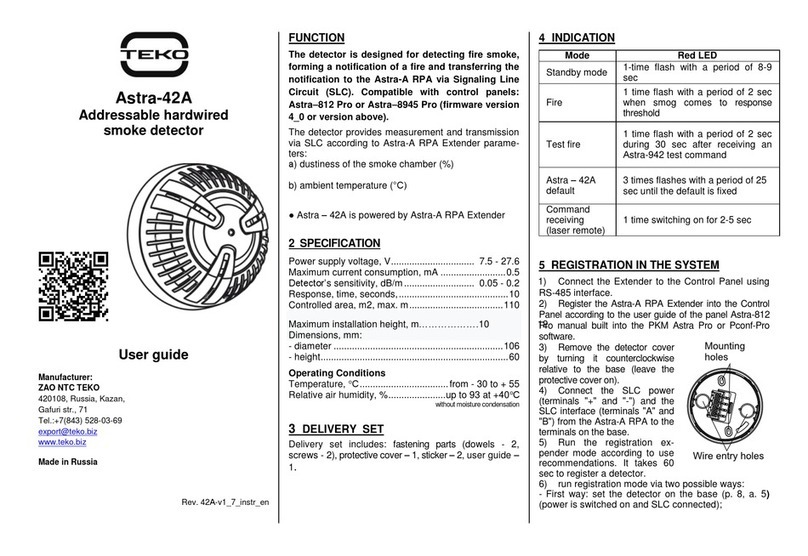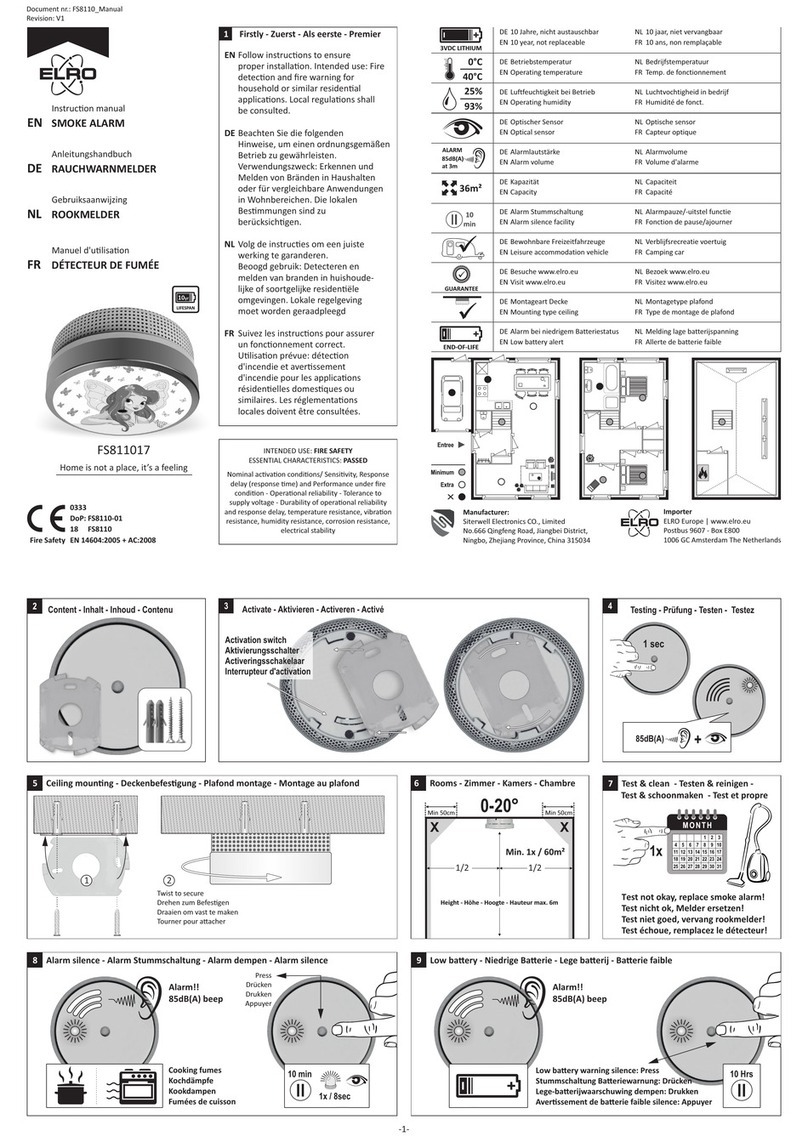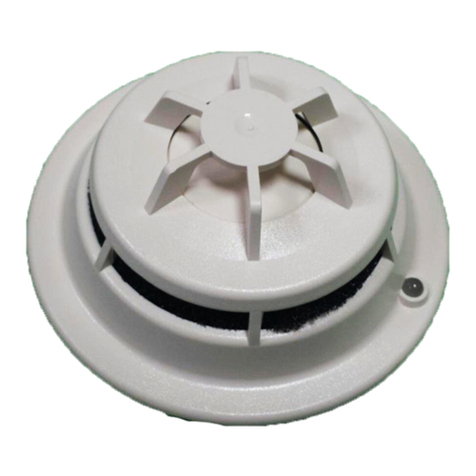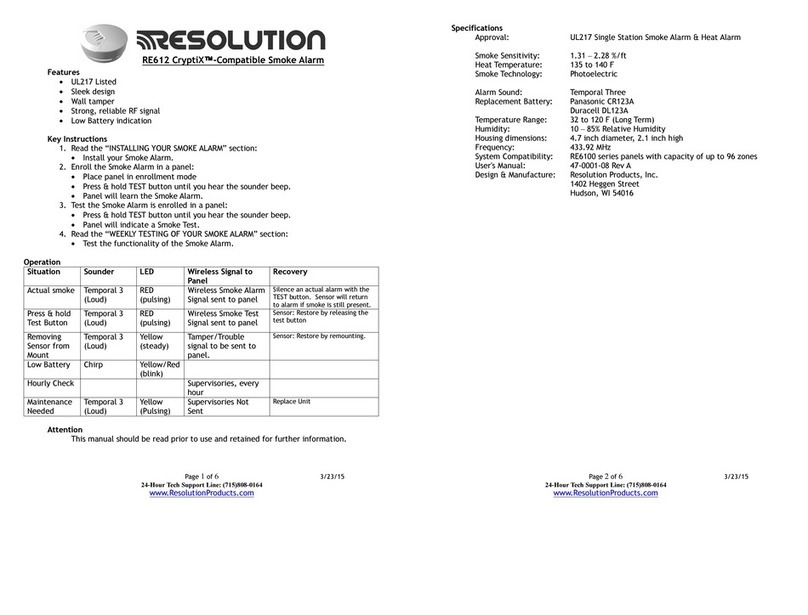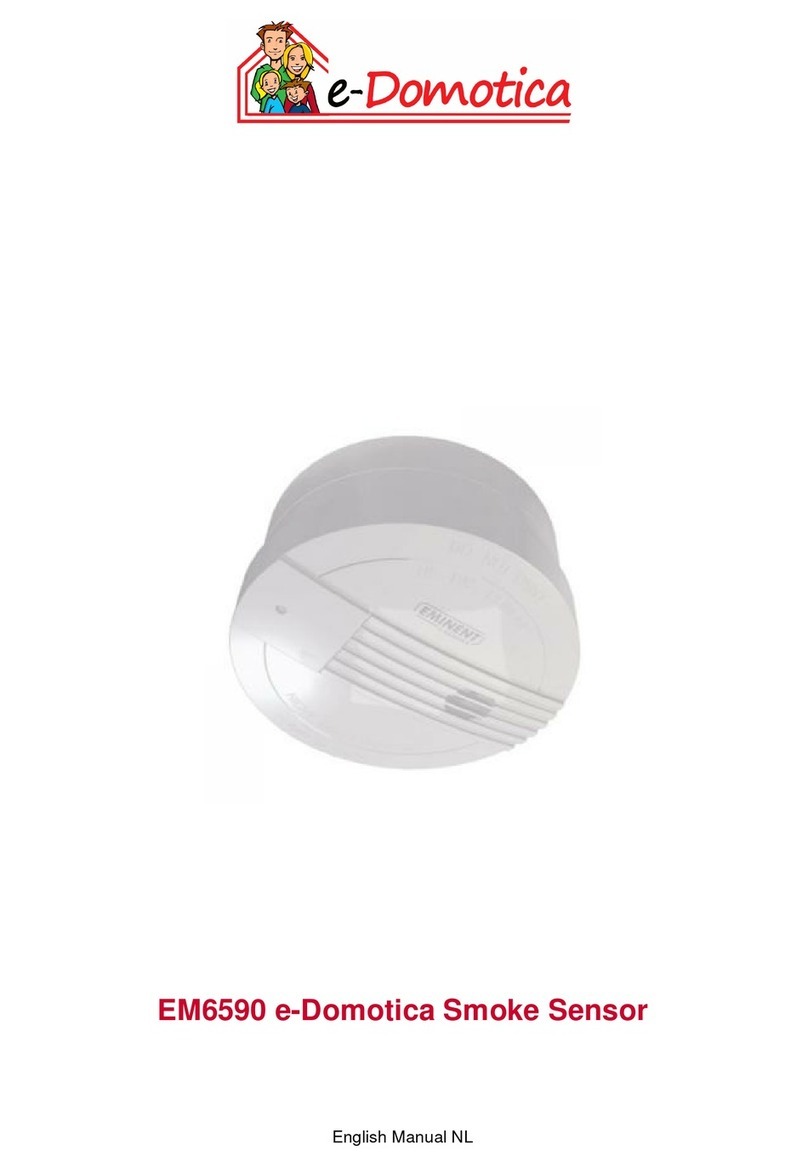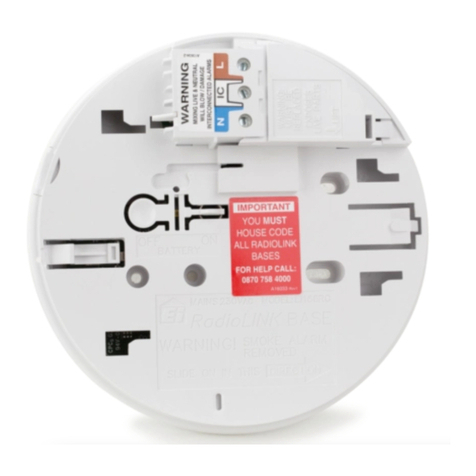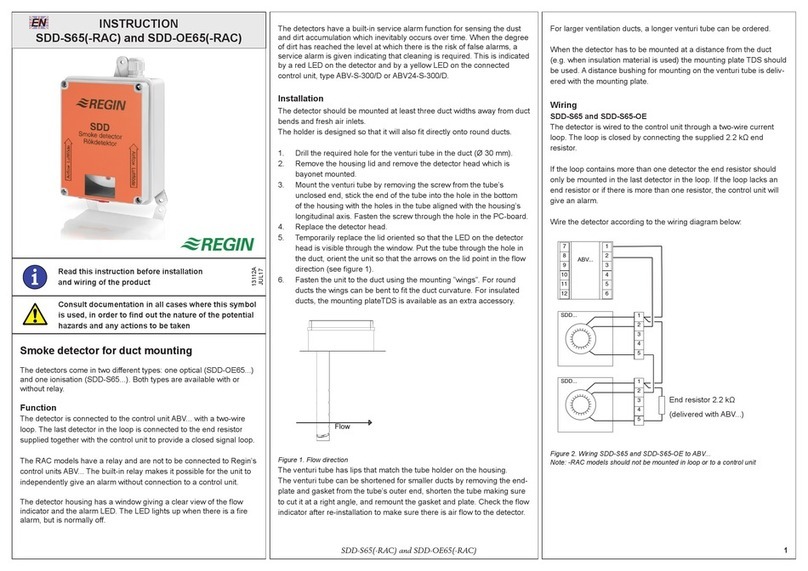
Smoke Detector Family Limited Warranty
Digital Security Controls Ltd. warrants that for a period of twelve months from the date of purchase,
the product shall be free of defects in materials and workmanship under normal use and that in fulfill-
ment of any breach of such warranty, Digital Security Controls Ltd. shall, at its option, repair or
replace the defective equipment upon return of the equipment to its repair depot. This warranty
applies only to defects in parts and workmanship and not to damage incurred in shipping or handling,
or damage due to causes beyond the control of Digital Security Controls Ltd. such as lightning, exces-
sive voltage, mechanical shock, water damage, or damage arising out of abuse, alteration or improper
application of the equipment.
The foregoing warranty shall apply only to the original buyer, and is and shall be in lieu of any and all
other warranties, whether expressed or implied and of all other obligations or liabilities on the part of
Digital Security Controls Ltd. Digital Security Controls Ltd. neither assumes, responsibility nor
authorizes any other person purporting to act on its behalf to modify or to change this warranty, nor to
assume for it any other warranty or liability concerning this product.
In no event shall Digital Security Controls Ltd. be liable for any direct, indirect or consequential dam-
ages, loss of anticipated profits, loss of time or any other losses incurred by the buyer in connection
with the purchase, installation or operation or failure of this product.
Smoke Detectors
Smoke detectors that are a part of this system may not properly alert occupants of a fire for a number
of reasons, some of which follow. The smoke detectors may have been improperly installed or posi-
tioned. Smoke may not be able to reach the smoke detectors, such as when the fire is in a chimney,
walls or roofs, or on the other side of closed doors. Smoke detectors may not detect smoke from fires
on another level of the residence or building.
Every fire is different in the amount of smoke produced and the rate of burning. Smoke detectors can-
not sense all types of fires equally well. Smoke detectors may not provide timely warning of fires
caused by carelessness or safety hazards such as smoking in bed, violent explosions, escaping gas,
improper storage of flammable materials, overloaded electrical circuits, children playing with
matches or arson.
Even if the smoke detector operates as intended, there may be circumstances when there is insuffi-
cient warning to allow all occupants to escape in time to avoid injury or death.
Warning: Digital Security Controls Ltd. recommends that the entire system be completely tested on a
regular basis. However, despite frequent testing, and due to, but not limited to, criminal tampering or
electrical disruption, it is possible for this product to fail to perform as expected.
Important Information: Changes or modifications not expressly approved by Digital Security Con-
trols Ltd. could void the user’s authority to operate this equipment.
FCC Compliance Statement
CAUTION: Changes or modifications not expressly approved by DSC could void your authority to use this
equipment.
This equipment has been tested and found to comply with the limits for a Class B digital device, pursuant to
Part 15 of the FCC Rules. These limits are designed to provide reasonable protection against harmful interfer-
ence in a residential installation. This equipment generates, uses and can radiate radio frequency energy and,
if not installed and used in accordance with the instructions, may cause harmful interference to radio commu-
nications. However, there is no guarantee that interference will not occur in a particular installation. If this
equipment does cause harmful interference to radio or television reception, which can be determined by turn-
ing the equipment off and on, the user is encouraged to try to correct the interference by one or more of the
following measures:
• Re-orient the receiving antenna.
• Increase the separation between the equipment and receiver.
• Connect the equipment into an outlet on a circuit different from that to which the receiver is connected.
• Consult the dealer or an experienced radio/television technician for help.
The user may find the following booklet prepared by the FCC useful: “How to Identify and Resolve Radio/
Television Interference Problems”. This booklet is available from the U.S. Government Printing Office,
Washington D.C. 20402, Stock # 004-000-00345-4.
Industry Canada Compliance Statement
This Class B digital apparatus meets all requirements of the Canadian interference-causing equipment regula-
tions.
Cet appareil numérique de la Classe B respecte toutes les exigences de règlement sur le matériel brouilleur du
Canada.
Model Heat Sounder Aux
Relay LED
Output
Max.
Alarm
Current
Draw
FSA-210A, FSA210B, FSA-210C NO NO NO NO 35mA
FSA-210AT, FSA-210BT, FSA-210CT YES NO NO NO 35mA
FSA-210AR, FSA-210BR, FSA-210CR NO NO YES NO 50mA
FSA-210ART, FSA-210BRT,
FSA-210CRT
YES NO YES NO 50mA
FSA-210AS, FSA-210BS, FSA-210CS NO YES NO NO 60mA
FSA-210AST, FSA-210BST,
FSA-210CST
YES YES NO NO 60mA
FSA-210ARS, FSA-210BRS,
FSA-210CRS
NO YES YES NO 75mA
FSA-210ARST, FSA-210BRST,
FSA-210CRST
YES YES YES NO 75mA
FSA-210ALST, FSA-210BLST,
FSA-210CLST
YES YES NO YES 60mA
FSA-210ALRST, FSA-210BLRST,
FSA-210CLRST
YES YES YES YES 75mA
Specifications
Diameter (base) . . . . . . . . . . . . . . . . . . . . . . . . . . . . . . . . . . 5.8in (147mm)
Height (including base) . . . . . . . . . . . . . . . . . . . . . . . . . . . . 2.077in (528mm)
Operating Temperature. . . . . . . . . . . . . . . . . . . . . . . . 32º-100ºF (0º-37.8ºC)
Humidity. . . . . . . . . . . . . . . . . . . . . . . . . . . . . 5%-93% RH, non-condensing
Maximum Operating Voltage Range . . . . . . . . . . . . . . . . . . . . . 9.35 - 30VDC
Maximum Standby Current . . . . . . . . . . . . . . . . . . . . . . . 20
µ
A@12 or 24VDC
Maximum Alarm Current: . . . . . . . . . . . . . . . . . . . . . . . . . . . . . . . . 35-75mA
Smoke Sensitivity ULC. . . . . . . . . . . . . . . . . . . . . . . 2%±0.5%/ft obscuration
Smoke Sensitivity UL . . . . . . . . . . . . . . . . . . . . . . . . 3%±0.8%/ft obscuration
Heat Alarm . . . . . . . . . . . . . . . . . . . . . . . . . . . . . . . . . . . . . . . 135ºF (57ºC)
Sounder Alarm Pattern UL . . . . . . . . . . . . . . . . Evacuation Temporal Pattern
Sounder Alarm Pattern ULC . . . . . . . . . . . . . . . . . . . . . . . Continuous Beeps
Minimum Remote LED Resistance:
12V system. . . . . . . . . . . . . . . . . . . . . . . . . . . . . . . . . . . . . . . 500 Ohm
24V system. . . . . . . . . . . . . . . . . . . . . . . . . . . . . . . . . . . . . . 1000 Ohm
Maximum Remote LED output (if equipped):. . . . . . . . . . . . . . . . . . . . 25mA
Auxiliary Relay Rating (Form C Relay) . . . . . . . . . . . . . 2A @ 30VDC (Resistive)
FSA-210 series compatibility identifier: . . . . . . . . . . . . . . . . . . . . . . . . FS200
Compatible Control Units:
DSC PC1555 with compatibility identifier: . . . . . . . . . . . . . . . . . .PC15-1
DSC PC5010 with compatibility identifier: . . . . . . . . . . . . . . . . . . .PC5-1
DSC PC5015 with compatibility identifier: . . . . . . . . . . . . . . . . . .PC15-1
DSC PC5020 with compatibility identifier: . . . . . . . . . . . . . . . . . . .PC5-2
DSC PC4020 with compatibility identifier: . . . . . . . . . . . . . . . . . . . FM-2
DSC PRM-2W with compatibility identifier: . . . . . . . . . . . . . . . . . . PR200
L = Remote LED output
R = Auxiliary Form C Relay
S = Sounder
T = Fixed Temperature Heat Sensor
FSA-210 XYYYY
A = ULC
B = UL
C = EU
2-Wire Smoke Detector Family
29006015R002
©2003 Digital Security Controls
Toronto, Canada • www.dsc.com
Tech Support: 1-800-387-3630 or 905-760-3036
Printed in Canada 29006015 Rev 002
